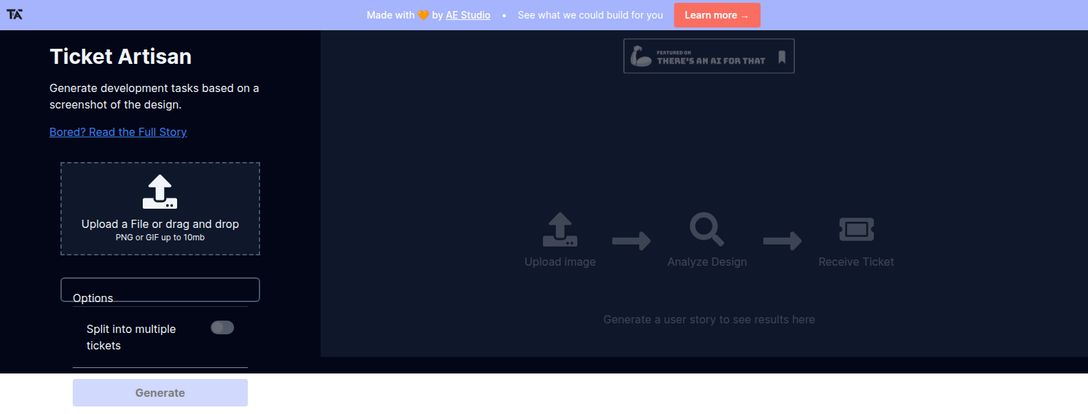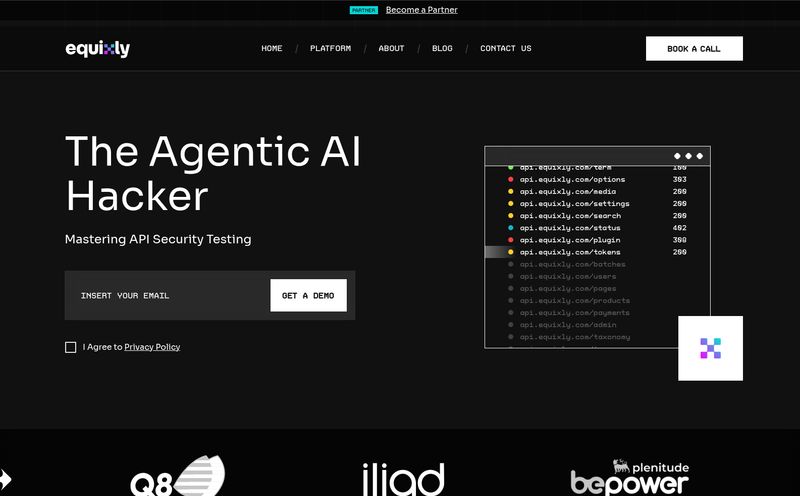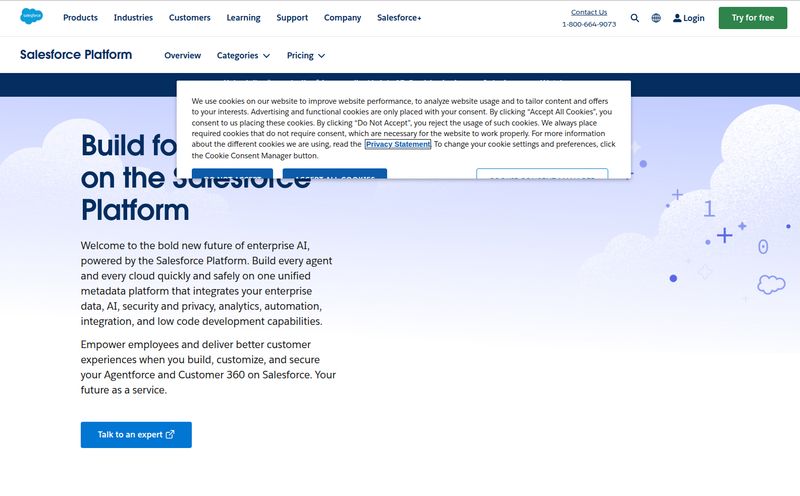You, me, and the ghost of sprints past. If you’ve ever been a Project Manager, a Scrum Master, or even just a dev lead, you know The Grind. It’s that special moment after the design team unveils their beautiful, pixel-perfect UI mockup. Everyone oohs and aahs. And then, the silence. Everyone looks at you. Because now, that beautiful JPEG needs to be sliced, diced, and translated into a mountain of user stories and development tickets.
I’ve been there. So. Many. Times. Hunched over my keyboard, squinting at a design, trying to articulate in Jira-ese that “this button should have a 3px border-radius and a subtle hover state.” It’s tedious, it's time-consuming, and honestly, it’s where a lot of miscommunication is born. One person’s “intuitive user flow” is another person’s ten-ticket dependency nightmare.
So when I stumbled upon a tool called Ticket Artisan, my ears perked up. The promise was simple, almost deceptively so: turn a screenshot of a design into a development ticket. An AI for that? Sign me up. I had to see if it was just another shiny new toy or a genuine game-changer for my workflow.
So, What Exactly Is This Ticket Artisan Thing?
At its core, Ticket Artisan is a bridge. It’s the digital Rosetta Stone for translating designer-speak into developer-action. You take a static image of a user interface—a PNG or a GIF—and feed it to the machine. The AI then puts on its little thinking cap, analyzes all the components, and spits out a ready-to-use user story or development ticket.
It's built for the people in the trenches of agile development. The ones who live in Jira, Asana, or Trello. Instead of manually creating a ticket, writing out the user story from the perspective of an end-user, and listing acceptance criteria... you just upload a picture. It sounds a little like magic, and in a way, it kinda is.

Visit Ticket Artisan
My First Spin with the Tool
Jumping into Ticket Artisan is… well, it’s shockingly simple. There’s no crazy sign-up process, no 10-step tutorial. The interface is clean, almost minimalist. You're greeted with a big, friendly drag-and-drop box. That's it.
The process is exactly what it says on the tin:
- Upload Image: I grabbed a screenshot of a simple login page design I had lying around. A standard PNG file, well under the 10mb limit.
- Analyze Design: I hit the 'Generate' button and watched the magic happen. There’s no fancy progress bar, just a moment of anticipation.
- Receive Ticket: A few seconds later, a fully formed user story appeared. It identified the key elements: the input fields for username and password, the login button, and even the 'Forgot Password?' link.
I was genuinely impressed. It wasn't just a list of elements; it framed them as an actionable task. I also noticed a little toggle: “Split into multiple tickets.” My mind immediately went to more complex dashboard designs. The ability to break down a huge UI into smaller, manageable tasks automatically? Yes, please. That's a feature that shows the creators, AE Studio, actually understand the agile process.
The Good, The Bad, and The AI-Generated
No tool is perfect, right? Especially not a new AI one. After playing around with a few different designs, I got a pretty good feel for its strengths and where it still needs a human touch.
Where Ticket Artisan Really Shines
The biggest win here is speed. The amount of time this saves on pure administrative drudgery is incredible. It’s like having a junior PM who never gets tired and never needs a coffee break. This frees up so much mental energy to focus on the why behind the tickets—the strategy, the user impact, the priority—instead of just the what.
Another huge benefit is clarity. The AI is objective. It describes what it sees. This can reduce the ambiguity that often creeps into human-written tickets. It also establishes a consistent format for your tickets, which makes the backlog much easier to scan and understand. It supports the big three—Jira, Asana, and Trello—which covers probably 95% of the teams out there.
Some Caveats and Considerations
Okay, let's ground ourselves. The tool is smart, but it's not a mind reader. The old saying “garbage in, garbage out” applies perfectly here. If you upload a messy, low-resolution, or unclear design, you're going to get a vague or confusing ticket. The quality of the output is directly proportional to the clarity of the input.
It’s also limited to PNGs and GIFs for now. In a world where Figma reigns supreme, I'm hoping for direct integration in the future. Imagine just pasting a Figma frame URL! A man can dream. Finally, you should absolutely treat the output as a first draft. It’s an incredibly strong starting point, but it still needs a human to review it, add context, define specific acceptance criteria, and link dependencies. It’s an assistant, not an autonomous replacement.
Who Is This Tool Actually For?
While I think anyone on a product team could find this useful, a few roles come to mind immediately:
- Scrum Masters & PMs: This is your new best friend for backlog grooming sessions. You can generate a whole sprint's worth of tickets from a set of approved mockups in a fraction of the time it would normally take.
- Freelancers & Small Agencies: When a client sends over a “simple design,” you can run it through Ticket Artisan to quickly generate a preliminary scope of work. It helps translate a visual into a task list, which is gold for quoting projects accurately.
- Designers: This might be an interesting one. Designers could use this to see how their creations are interpreted by a logical system. It could help them annotate their designs better to ensure their intent is captured by the development team.
What's the Price Tag on This Magic?
Here's the interesting part. As of my review, there's no pricing page. No credit card form. It seems to be completely free to use right now. My guess is it's in an extended beta or an introductory phase to gather feedback. Given the value it provides, I wouldn't be surprised to see a tiered pricing model in the future. But for now, you can just go to their site and start generating. It's a pretty sweet deal for a tool that, as its promotion on There's an AI for That suggests, fills a very real need.
The Bigger Picture: AI Creeping into Project Management
Ticket Artisan isn't an isolated phenomenon. It's part of a much larger trend. We've seen AI like GitHub Copilot revolutionize coding and tools like Jasper change content creation. Now, that same wave is finally hitting the administrative side of software development.
And I'm here for it. These tools aren't about replacing humans. They're about augmenting them. They handle the repetitive, formulaic tasks that drain our energy and creativity. By automating the creation of ticket drafts, we free up our cognitive resources to solve harder problems: Is this feature truly valuable to the user? What are the potential risks? How can we deliver this faster? That's where human experience and intuition really matter, and tools like Ticket Artisan help us spend more time there.
My Final Thoughts on Ticket Artisan
So, is Ticket Artisan the holy grail of sprint planning? Not quite, but it’s an incredibly promising and practical tool that solves a real-world, nagging problem. It’s fast, simple, and surprisingly effective. It won't run your scrums for you, but it will make preparing for them a heck of a lot easier.
If you’re someone who spends even an hour or two a week translating designs into tickets, you owe it to yourself to give it a try. It might just become your favorite little secret weapon for a smoother, more efficient workflow. I know it's earned a permanent bookmark in my browser.
Frequently Asked Questions
- What is Ticket Artisan?
- Ticket Artisan is a free-to-use AI tool that analyzes UI design screenshots (PNG or GIF) and automatically generates development tickets and user stories for project management platforms like Jira, Asana, and Trello.
- What project management tools does it support?
- It generates text-based tickets that are formatted for and can be easily copied into popular tools, including Jira, Asana, and Trello.
- Is Ticket Artisan free to use?
- Yes, as of late 2023, the tool appears to be completely free to use. There is no pricing information available on their website, suggesting it's in a beta or promotional period.
- How accurate are the generated tickets?
- The accuracy is quite high, especially for clear, well-structured UI designs. However, it's best to treat the generated ticket as a detailed first draft that should be reviewed and refined by a human.
- What file formats can I upload?
- Currently, Ticket Artisan supports PNG and GIF files up to 10MB in size. It does not support direct integration with design files like Figma or Sketch yet.
- Can it handle very complex UI designs?
- Yes, it can analyze complex designs. For very dense UIs, it's recommended to use the "Split into multiple tickets" feature to break down the work into smaller, more manageable tasks for your development team.
Reference and Sources
- Ticket Artisan Official Website
- AE Studio (The Creators)
- There's An AI For That (Listing)
- An Overview of Agile Project Management by Atlassian



